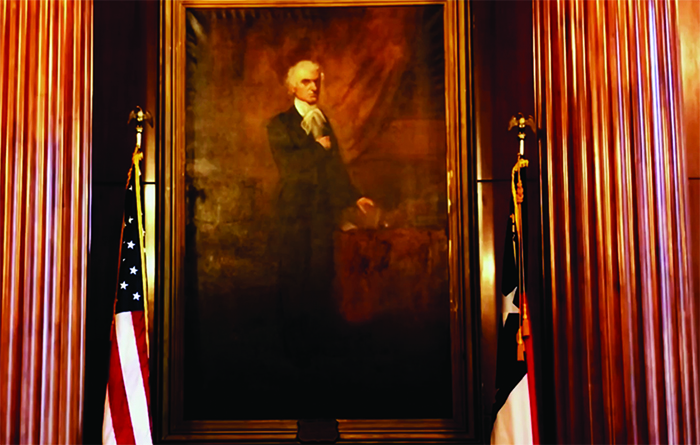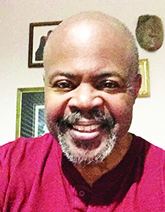
Portrait of White racist Justice removed from NC Supreme Court

By Cash Michaels

The portrait of a vicious white racist slave-owning former NC Supreme Court chief justice has been removed from the courtroom of the NC Supreme Court because of the white supremacist legacy of the infamous jurist.
The portrait of former Chief Justice Thomas Carter Ruffin - who served from 1829 to1855- was removed last week by Dec. 22nd order of the Advisory Commissions on Portraits after final recommendations from that panel in December 2019.
A large seal of the NC Supreme Court was hung in its place.
“It is important that our courtroom spaces convey the highest ideals of justice and that people who come before our Court feel comfortable knowing that they will be treated fairly,” wrote outgoing Chief Justice Cheri Beasley. “The Court’s decision to remove the Ruffin portrait is a tremendous reflection of the progress that has been made since the time Chief Justice Ruffin served on the Court.”
To many legal scholars, Chief Justice Ruffin is considered “one of the most important jurists in American history” for his staunch advocacy for a fiercely independent judiciary from the legislature. Ruffin was also a prominent attorney, state lawmaker, state banker, plantation owner and slave owner in the Piedmont. It was after Ruffin left the presidency of the North Carolina State Bank that he was elected to the North Carolina Supreme Court.
And it is there that Justice Ruffin issued his post controversial legal opinion, State v. Mann, which found in favor of a brutal white slaveowner who was charged with assault and battery after gravely wounding a female slave upon her attempted escape.
“The power of the master must be absolute, to render the submission of the slave perfect. I most freely confess my sense of the harshness of this proposition . . . But in the actual condition of things, it must be so. . . . [It] will be the imperative duty of the Judges to recognize the full dominion of the owner over the slave,” Justice Ruffin wrote then.
While many legal scholars look up to Justice Ruffin for his strong advocacy for an independent judicial branch of government, not beholden to either the legislative or executive branches, many historians, and civil rights activists - especially here in North Carolina, felt that Ruffin’s racist history should not be further honored in the state’s highest court of justice.
“Disciplinary practices on Ruffin's plantation included bloody whippings, burning the skin of the enslaved, the use of red pepper and salt on their wounds, even though his slaveholding neighbors complained,” wrote NCNAACP Pres. T. Anthony Spearman and historian Dr. Timothy Tyson in a recent op-ed. “Because his peers had come to find the slave trade so distasteful, Ruffin trafficked in Black bodies in secret, selling them from the Upper South at vast profits to Alabama and Mississippi. Ruffin tore enslaved children from the arms of their parents and separated enslaved wives and husbands from one another, despite admonitions against this cruel practice from other slaveholders. He believed that, since profits constituted the essence of the institution, this should be the accepted practice.”
Even one of Chief Justice Beasley’s colleagues, Justice Michael Morgan, weighed in after the Ruffin portrait was removed.
“From where I sit, the NC Supreme Court's immediate removal, after its historic vote, of the sizeable portrait of Chief Justice Thomas Ruffin--a slaveowner who actively defended the horrors of slavery and utilized such practices himself--which dominated the Court's hallowed halls, not only causes the Courtroom to look different; it also causes it to feel different.” Justice Morgan wrote on Facebook, under video of courtroom staff removing the portrait.


